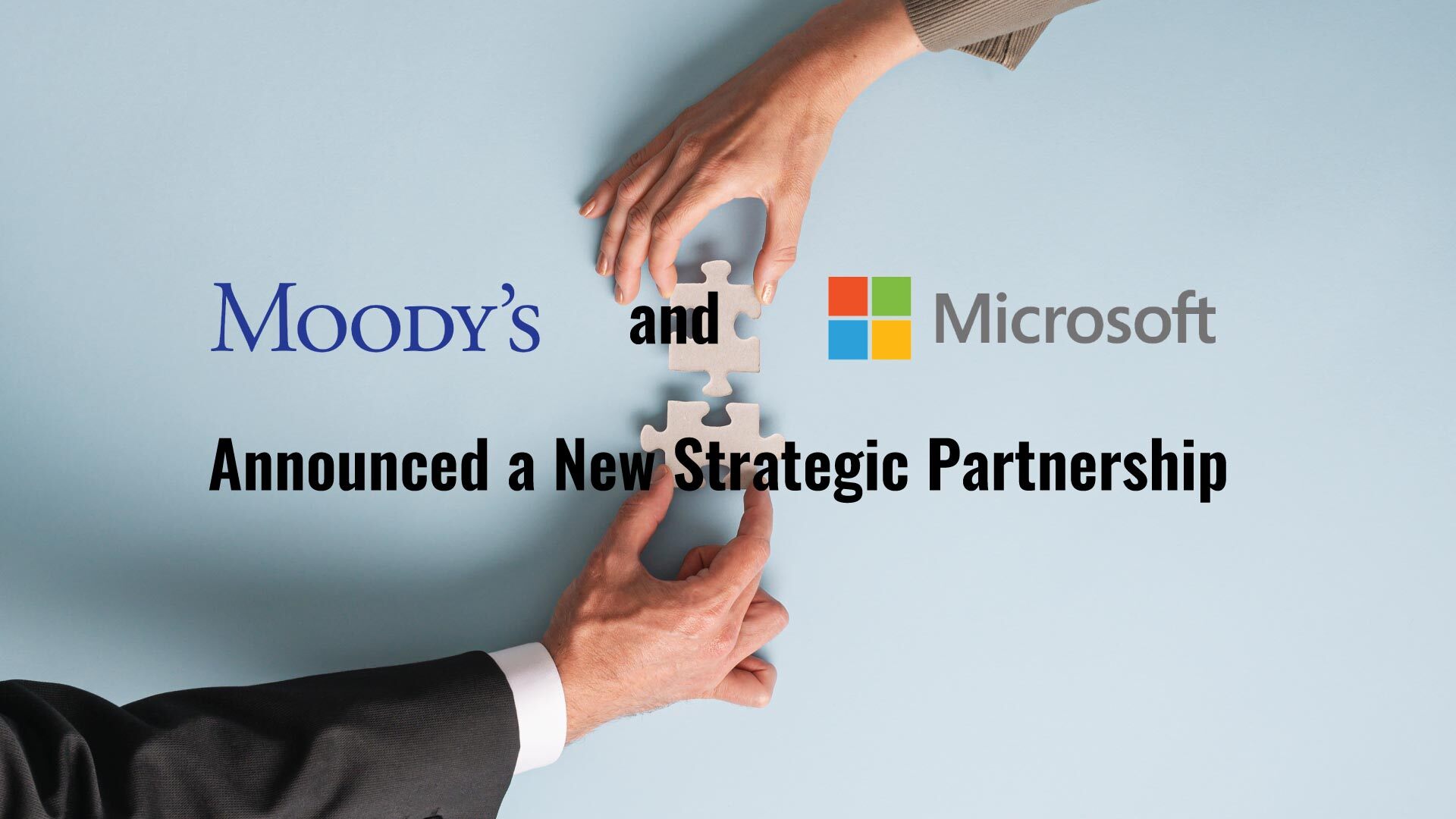

analytics artificial intelligence
Moody’s and Microsoft Develop Enhanced Risk, Data, Analytics, Research and Collaboration Solutions Powered by Generative AI
Moody’s and Microsoft Develop Enhanced Risk, Data, Analytics, Research and Collaboration Solutions Powered by Generative AI
 Business Wire
Business Wire
Published on : Jul 3, 2023
Strategic Partnership for Next-Gen Solutions Built on Microsoft Azure OpenAI Service, Microsoft Fabric, and Microsoft Teams and Moody’s Proprietary Data to Empower Financial Services, Capital Markets and More
Moody’s Corporation and Microsoft today announced a new strategic partnership to deliver next-generation data, analytics, research, collaboration and risk solutions for financial services and global knowledge workers. Built on a combination of Moody’s robust data and analytical capabilities and the power and scale of Microsoft Azure OpenAI Service, the partnership creates innovative offerings that enhance insights into corporate intelligence and risk assessment, powered by Microsoft AI and anchored by Moody’s proprietary data, analytics and research.
Strategic Partnership Highlights
- Microsoft and Moody’s are co-creating new products and services for research and risk assessment, built on Azure OpenAI Service for enhanced data and risk management.
- “Moody’s CoPilot,” an internal copilot tool, is now deployed to Moody’s 14,000 global employees, and will combine Moody’s proprietary data, analytics and research with the latest large language models (LLMs) and Microsoft’s world-class generative AI technology to drive firm-wide innovation and enhance employee productivity in a safe and secure digital sandbox.
- Moody’s is adopting Microsoft Teams to provide a new platform for its knowledge workers and customers that will enhance collaboration, productivity, and communication, while maintaining the highest compliance standards.
- For internal use and co-innovations, Microsoft is leveraging Moody’s broad range of solutions, including Moody’s Orbis database – one of the world’s most powerful databases on companies – with applications that include third-party reference data, counterparty risk assessment, and supply chain management.
- Microsoft and Moody’s will collaborate on the opportunity to deliver data to their shared customers through Microsoft Fabric, a new analytics platform for end-to-end data management.
- Moody’s commits to using Microsoft’s Azure cloud platform to power its growing suite of generative AI capabilities and cloud-based applications.
Rob Fauber, president and chief executive officer of Moody's Corporation, said, “Generative AI represents a once-in-a-generation opportunity to enhance how companies navigate the ever-evolving world of exponential risk. By combining Microsoft’s cutting-edge AI capabilities with our proprietary data, research and analytics, Moody’s is positioned to lead the next generation of risk analysis, helping our customers make better decisions by unlocking deeper, more integrated, and unmatched perspectives on risk. We have activated our 14,000 global employees to drive unprecedented experimentation and ignite new innovations across our suite of products and solutions. We are excited to partner with Microsoft to set the standard for how generative AI will pioneer new advancements across our industry.”
Unlocking Advancements in Integrated Risk Analysis
A new copilot tool for customers, “Moody’s Research Assistant,” will unlock the full potential of Moody’s resources and solutions to provide customers with a multifaceted view of risk. Built on Microsoft Azure OpenAI Service and available through multiple channels, including Microsoft Teams, Moody’s Research Assistant will quickly compile and summarize complex information from multiple data sources, all in a safe and secure environment that protects private and proprietary information. Among its many anticipated uses will be the ability to generate custom, detailed analyses of a company or sector by seamlessly combining data from across multiple dimensions – such as firmographic data, credit indicators, economic forecasts, and risk and reputational profiles – to provide fast, contextual and informative answers based on the integration of expansive LLMs and Moody’s industry-leading data, analytics and research.
Bill Borden, corporate vice president of worldwide financial services at Microsoft said, “Our partnership will bring together world-class insights from Moody’s with the capabilities, trust and breadth of Microsoft Cloud – including Azure OpenAI Service, Fabric and Teams – to enable next-gen solutions that will unlock powerful business intelligence and transform productivity and collaboration. We look forward to the new opportunities and value this will bring to employees and firms across banking, capital markets and insurance as well as those in other industries such as manufacturing, telecommunications, transportation and utilities.”
Enhancing Moody’s Collaboration and Productivity through Microsoft Teams
Additionally, through the partnership, Moody’s will leverage Microsoft Teams to create a new collaboration, productivity and communication platform for its knowledge workers and customers. With the integration of Moody’s copilot tools, Teams will automate and streamline manual workflows, provide more efficient access to data and content, and synthesize and summarize information from across multiple data sets, resulting in better insights, improved productivity and compliance, and enhanced employee and customer experiences.
Collaborating to Enhance the New Microsoft Fabric
Microsoft and Moody’s will collaborate on the opportunity to deliver data to their shared customers through Microsoft Fabric, a new end-to-end data analytics platform. Microsoft Fabric includes technologies like Azure Synapse Analytics, Azure Data Factory and Power BI in a single unified product, allowing data engineers opportunity to easily connect and curate data from multiple sources, eliminating sprawl, while better governing data across the entire organization.




